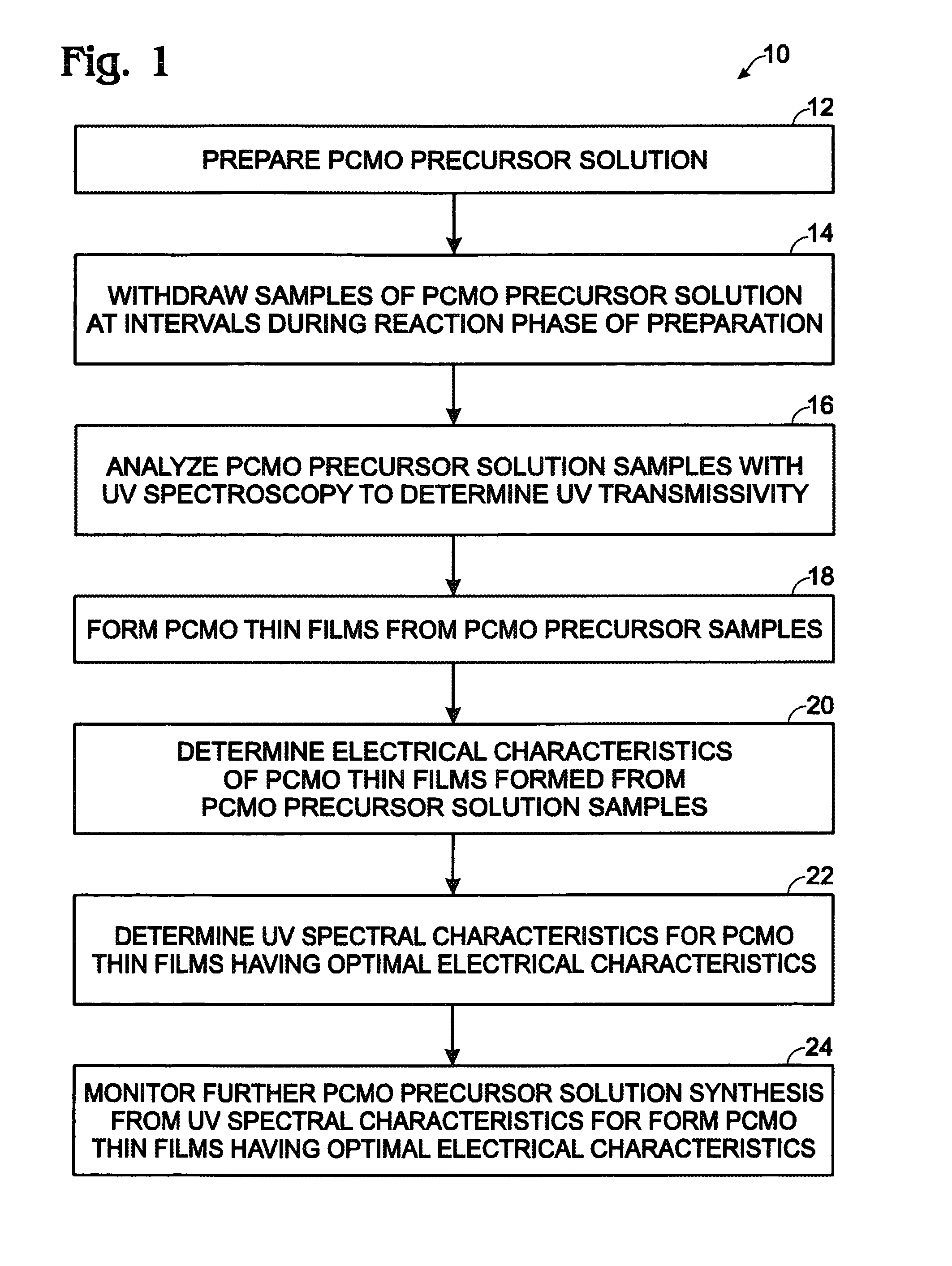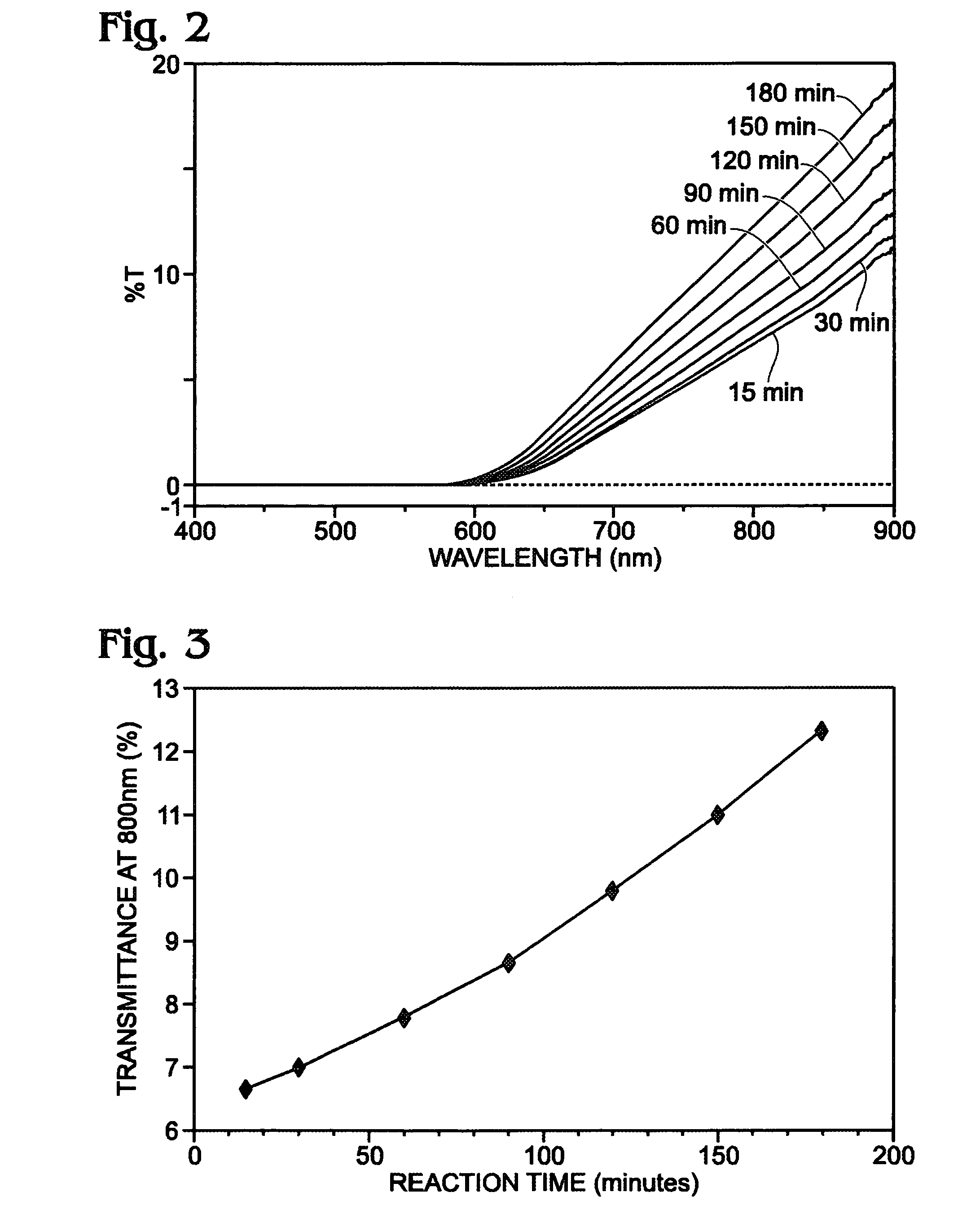Method of monitoring PCMO precursor synthesis
a technology of precursors and monitoring methods, applied in the direction of electric/magnetic/electromagnetic heating, semiconductor/solid-state device testing/measurement, instruments, etc., can solve the problem of pcmo thin films having less than optimal electrical characteristics
- Summary
- Abstract
- Description
- Claims
- Application Information
AI Technical Summary
Benefits of technology
Problems solved by technology
Method used
Image
Examples
example one
[0016]Pr(OAc)3.H2O, Ca(OAc)2.H2O and Mn(OAc)3.2H2O, purchased from Aldrich Chemicals and used without further purification, were used in the precursor synthesis process. HOOCCH3 (HOAc) was used as the solvent in the synthesis. To make a 0.25M PCMO precursor solution, Pr(OAc)3.H2O (2.94 gram) was placed in a 100 mL round bottom flask and dehydrated at 200° C. for one hour in a furnace. HOAc (30 mL) was then introduced. The resultant Pr(OAc)3 acetic acid solution was refluxed in air for two hours. Pr(OAc)3 was well dissolved in solution, and was in a clear light green in color. Ca(OAc)2 was formed by the dehydration of Ca(OAc)2.H2O at 200° C. for one hour in a furnace. Then Ca(OAc)2 (0.606 gram) was refluxed in 20 mL HOAc for 30 minutes, resulting in a clear, colorless solution. At the same time, Mn(OAc)3.2H2O (3.35 gram) was dissolved in 50 mL HOAc in a 100 mL long neck round bottom flask by heating at 110° C. for one hour. The color of the resultant Mn(OAc)3.2H2O HOAc solution was d...
example 2
[0019]A PCMO precursor solution was prepared as in Example 1. UV spectra of seven samples were collected and are shown in FIG. 4. The T % at 800 nm for these samples is shown in FIG. 5. The stability of PCMO precursor solution has been tested by running UV spectra over a period of time, as shown in FIG. 6, which demonstrates that the PCMO precursor solutions generate nearly the same UV spectra over 12 hours, which verifies the stable performance of the PCMO precursor solution. The electrical measurement on these series of samples established that only the sample allowed to react for 15 minutes or less exhibited good reversible resistance switch properties. Thus in the case of Mn(OAc)3.2H2O pre-heated at 110° C. for 5 hours, T % at 800 nm of PCMO solution UV spectrum should be less than 9% for obtaining working PCMO precursor solutions.
PUM
| Property | Measurement | Unit |
|---|---|---|
| wavelength | aaaaa | aaaaa |
| time | aaaaa | aaaaa |
| UV spectroscopy | aaaaa | aaaaa |
Abstract
Description
Claims
Application Information
 Login to View More
Login to View More - R&D
- Intellectual Property
- Life Sciences
- Materials
- Tech Scout
- Unparalleled Data Quality
- Higher Quality Content
- 60% Fewer Hallucinations
Browse by: Latest US Patents, China's latest patents, Technical Efficacy Thesaurus, Application Domain, Technology Topic, Popular Technical Reports.
© 2025 PatSnap. All rights reserved.Legal|Privacy policy|Modern Slavery Act Transparency Statement|Sitemap|About US| Contact US: help@patsnap.com



